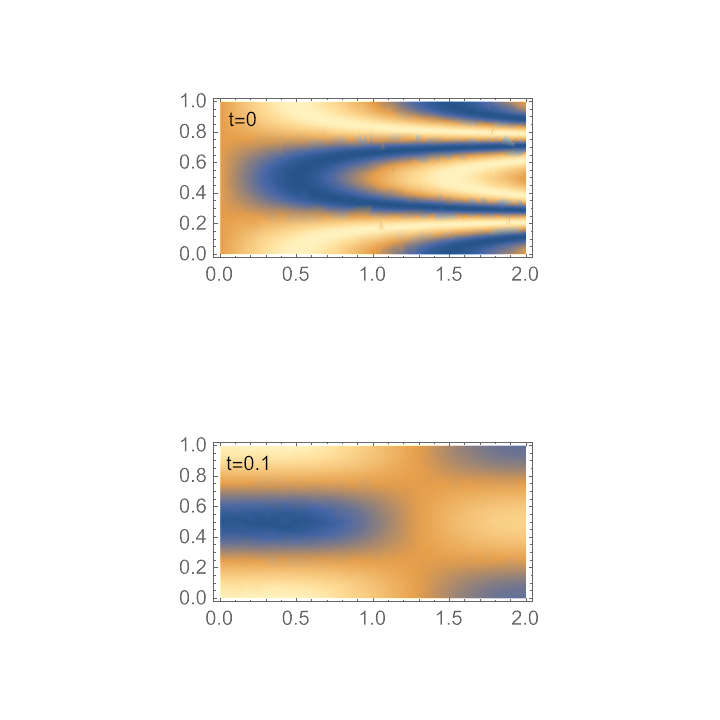The heat equation describes how heat flows in a material. In this example we look at a 2D region over which we solve initial value problems to describe heat flow. We obtain both symbolic and numerical results for our solutions.
Define the heat equation: ∂tu=∇2u in 2D:
Choose a region to solve the heat equation on:
Select an initial condition for the heat of the region as an arbitrary function:
Solve the heat equation on this region for the above initial conditions:
We see that the solution is just the same as the initial condition, but with a decaying exponential out front. This is because the initial condition could be separated into functions of each variable u[x,y,0]=f[x]g[y] with f[x]=Sin[2π x] and g[y]=Cos[π y]. What about an initial condition where this isn't true?
Let's add a periodic boundary condition since our initial condition is periodic in y:
Solve the heat equation on Ω with this more complicated initial condition. This time use NDSolveValue to get a numerical result:
After just t=0.1, the higher frequency wiggles dissipated away and only the longer frequency wiggles survive:
